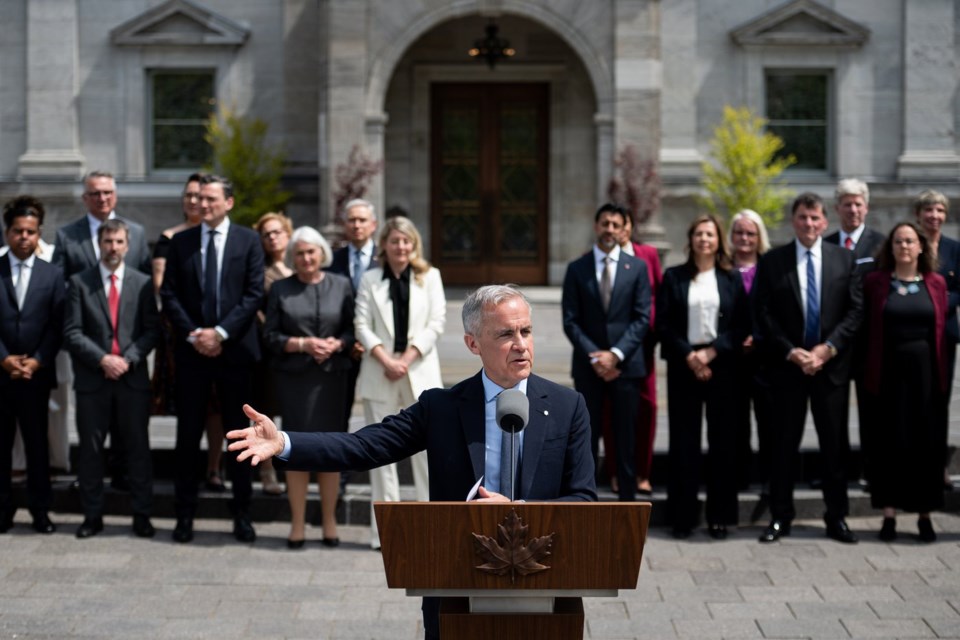OTTAWA — Prime Minister Mark Carney has unveiled his 28-member cabinet and it's a mix of familiar and new faces from across Canada.
Carney's cabinet is smaller than that of his predecessor — former prime minister Justin Trudeau's government had 35 ministers by the end — and adds 10 secretaries of state, who are essentially junior ministers.
Carney continued with the practice of gender parity in cabinet started by Trudeau in 2015.
Some mainstays of the Trudeau government are also missing from Carney's cabinet. Some portfolios are new or have been split, and some ministers have changed positions.
Some Trudeau ministers go, many stay
There are 24 new faces on Carney's team, including 13 newly elected members of Parliament.
Of the 28 ministers and 10 secretaries of state, 14 are holdovers from the Trudeau era.
Four ministers — Chrystia Freeland, Patty Hajdu, Mélanie Joly and Dominic LeBlanc — have been in cabinet since the Liberals took power in 2015.
Some notable names from Trudeau's cabinets have not carried over to Carney's team. They include former defence minister Bill Blair, former energy minister Jonathan Wilkinson and former Treasury Board president Ginette Petitpas Taylor.
Anita Anand takes over foreign affairs from Joly, who becomes minister of industry.
David McGuinty, the former public safety minister, takes on the national defence portfolio. Sean Fraser is the new justice minister, leaving the housing portfolio he held in the Trudeau era to former Vancouver mayor Gregor Robertson.
Some regions were left out of cabinet
All provinces are represented by ministers in the new Liberal cabinet, with the exception of Saskatchewan.
Desnethé–Missinippi–Churchill River's Buckley Belanger, the lone Liberal MP in Saskatchewan, will represent the province as secretary of state for rural development but is not a formal member of cabinet.
Rebecca Alty, the minister of Crown-Indigenous relations, will represent Northwest Territories in cabinet. Brendan Hanley, Liberal MP for Yukon, was not given a spot in cabinet, while Nunavut is represented by NDP MP Lori Idlout.
Including secretaries of state, Ontario has most representation at the cabinet and sub-cabinet levels — 14 people, half of them from the Greater Toronto Area. Quebec follows with nine individuals, British Columbia with five and New Brunswick and Nova Scotia with two each. Newfoundland and Labrador, Prince Edward Island, Manitoba, Saskatchewan, Alberta and Northwest Territories each have one minister or secretary of state.
Canada's first Indigenous minister of Indigenous services
Mandy Gull-Masty, former grand chief of the Grand Council of the Crees, was sworn in Tuesday as the Indigenous services minister.
She is the first Indigenous person ever chosen to lead the federal department responsible for providing services to First Nations, Inuit and Métis communities.
Sitting with her at the cabinet table will be rookie Anishinaabe MP and minister Rebecca Chartrand, who takes on the northern affairs portfolio, and Belanger, a Métis secretary of state.
A minister for artificial intelligence
Carney's cabinet will see the portfolios of industry and innovation separated, with a bit of extra focus added to the latter.
Joly will serve as the industry minister in cabinet, while former journalist Evan Solomon takes on a new portfolio handling artificial intelligence and digital innovation.
Solomon was elected for the first time in the April 28 election in the riding of Toronto Centre. He previously worked as a TV host for both CBC and CTV.
During the election campaign, Carney emphasized the economic potential of AI and promised to invest in AI training, adoption and commercialization.
— with files from Alessia Passafiume and Anja Karadeglija
This report by The Canadian Press was first published May 13, 2025.
Craig Lord, The Canadian Press



